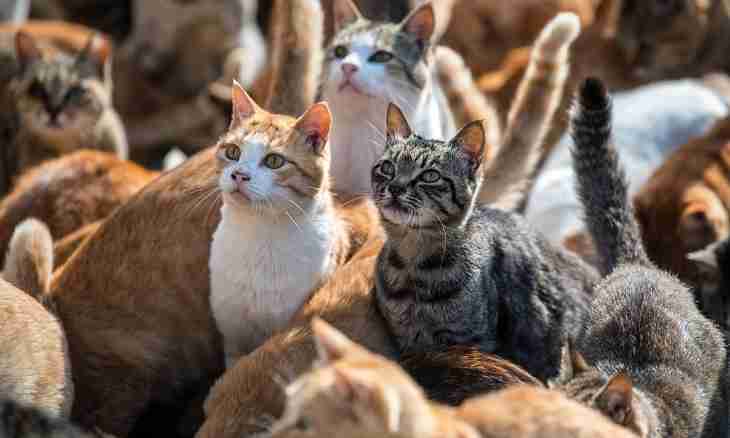Uraemia is intoxication during which the secretory system of an animal is not capable to remove metabolism products, in particular, of nitrogenous exchange. If to translate the term literally, then "urine in blood" will turn out.
Uraemia is divided into two views. It can be sharp or chronic. Sharp develops immediately, the sharp renal failure arising owing to injuries, burns, intoxication or a delay of urine leads to it. Development of chronic uraemia happens gradually, on it a lot of time can leave. It depends on how the chronic renal failure arising because of pyelonephritises, an urolithic disease, diabetes, congenital anatomic anomalies, intoxications and new growths will long develop. Symptoms of uraemia can be expressed by vomiting, refusal of food, loss of weight, oppression, the urea smell proceeding from a mouth or lack of urination.
Diagnosis of uraemia
1) Biochemical and general blood tests. With their help it is possible to estimate levels of creatinine, urea, phosphorus, to reveal changes in electrolytic structure and also to reveal existence of inflammation and anemia.
2) Ultrasonography of an abdominal cavity. With its help it is possible to estimate anatomical structure of kidneys, to reveal, there are no suspensions and concrements in a bladder whether mochetochnik and an urethra are expanded. 3) X-ray of an abdominal cavity for the purpose of visualization of X-ray contrast stones in a kidney, an urethra or a bladder. The chronic renal failure is detected, as a rule, in elderly animals. Young patients face uraemia because of a sharp delay of urine or because of the inherited pathologies – an amiloidoz, a polikistoz of kidneys. Impact of uraemia on an organism the zhivotnogokhronichesky renal failure changes structure of kidneys gradually. Some nephrons stop working, intoxication (uraemia) is saved gradually. Due to the lack of symptoms of change it is possible not to notice. The more nephrons dies off, the symptoms are shown more distinctly: thirst and frequent urination, uraemic gastritis and sometimes stomatitis. Often owners ask for the help too late when the majority of the working nephrons dies off. Than the level of intoxication, subjects high probability of development of secondary pathologies is higher. It is not regenerator anemia, electrolytic and endocrinological violations, problems of cardiological and neurologic character. The worst consequence – an uraemic coma. Treatment of uraemia and a chronic kidney nedostatochnostilechenia begins with intravenous drop injections which purpose is correction of electrolytic balance and also fight against dehydration. Treatment is followed by analyses among which laboratory control of gases of blood. Food is appointed dietary with the low content of proteins. Among the registered medicines – the drugs reducing the level of urea and phosphorus and also the hypotensive medicines and drugs directed to treatment and prevention of anemia. Prevention zabolevaniyaanaliz blood for identification, is recommended to hand over to both a renal failure, and an early stage of uraemia periodically when the animal reaches 6-7 years. What to do at sharp delays by a mochiposledstviye of an urolithic disease, prostatitis, injuries, cystitis and an atoniya of a bladder there can be a sharp delay of urine. It is easy to define it – the stomach is increased, urinations are absent or desires to it are unproductive, there is vomiting, the animal refuses food. In this case the emergency help of the expert directed to restoration of outflow of urine with correction of electrolytic violations with use of intravenous injections is required. All this occurs under control of analyses and ultrasonography. Uraemia – serious condition. It demands instant diagnostics and medical intervention. Revealed at early stages, it will not do harm to the pet.

